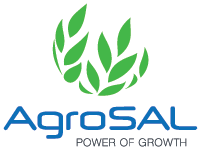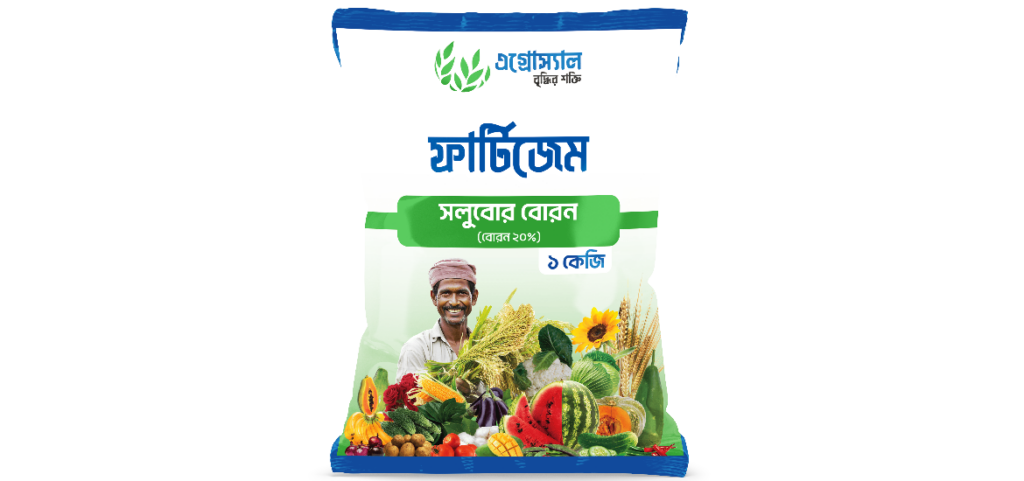
Content: 20 % Boron
Benefits:
- Carbohydrates produced through photosynthesis which helps in food metabolism and transport.
- Increases the viability of flower pollinators thereby helping in pollination.
- Plays an important role in the production of plants, flowers, fruits and seeds.
- Synthesizes proteins and amino acids.
- Ensures better production and quality of nutritious crops, vegetables and fruits.
- Plays an active role in the formation and formation of new plant cells
Application Level:
Fertigem solubor boron should be applied directly to the soil at the rate of 350-500 grams per bigha (at 33 shotangsho). In case of big trees, 25-50 grams of Fertigem solubor boron should be applied per plant. In case of leaf application, 10-15 grams of Fertigem solubor boron should be mixed with 10 liters of water and sprayed. Starting from the time of flowering or fruiting of the crop, it should be sprayed twice at intervals of 15 days, and a third time if necessary. The application rate may be lower or higher as per the requirement of different crops.It should be mixed with other chemical fertilizers at the time of final tillage or planting of seedlings. It can be applied in two different ways, sprinkling on the ground and spraying on the leaves. If there is lack of boron in the crop, it should be mixed with water and sprayed in the late afternoon. Boron fertilizer is easily wetted when exposed to water in the air, so the packet of boron should be opened shortly before application to the land.
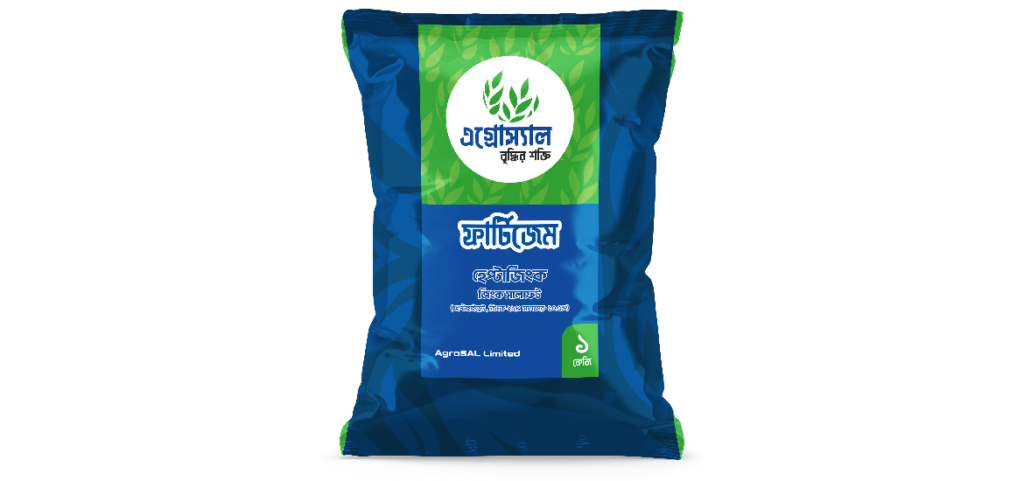
Contents: Zinc-21%, Sulfur 10.5%
Key Benefits:
- Makes plants green, fresh and strong and also helps in normal growth of crops.
- Produces auxin which supports plant growth
- Helps plants to produce chlorophyll and make carbohydrates
- Accelerates the action of various enzymes
- Helps absorption of nutrients and vitamins
- Helps shape the shape of flowers, fruits and seeds
- Nourishes grains result in weight gain of grains
- Nitrogen and phosphorus are easily taken up by plants
Application:
1-3 kg per bigha (33 shotangsho) should be applied. Depending on the zinc and sulfur deficiency in the soil, the application level may be more or less. It should be applied at the final cultivation or as per crop requirement. Urea can be mixed with fertilizer and sprinkled.
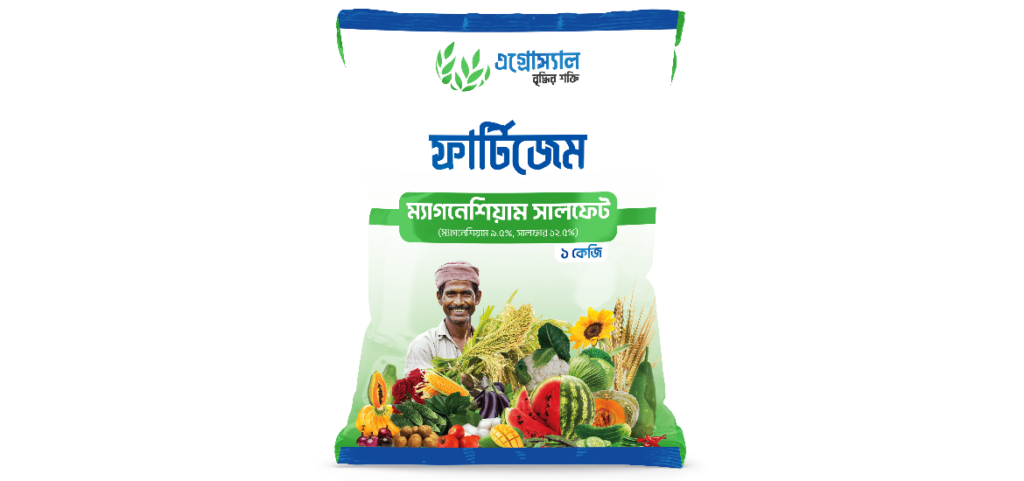
Content: Magnesium-9.5%, Sulfur-12.5%
Key Benefits:
- Increases the amount of chlorophyll resulting in more food being produced in the process of photosynthesis.
- Helps to produce essential amino acids, vitamins, carbohydrates and fats.
- Specially helps plants to take nutrients from soil
- Increases crop yield, grain and fruit size while maintaining flavor and nutritional value
Application Level:
Sprinkle:
Sprinkling 2-4 kg of fertigem magnesium sulphate per bigha (33 per cent) gives good results. If the magnesium deficiency is high, the dosage should be increased as per the advice.
Spraying: Mix well 100-150 grams of fertigem magnesium sulphate in 10 liters of water and spray on 5 percent land.
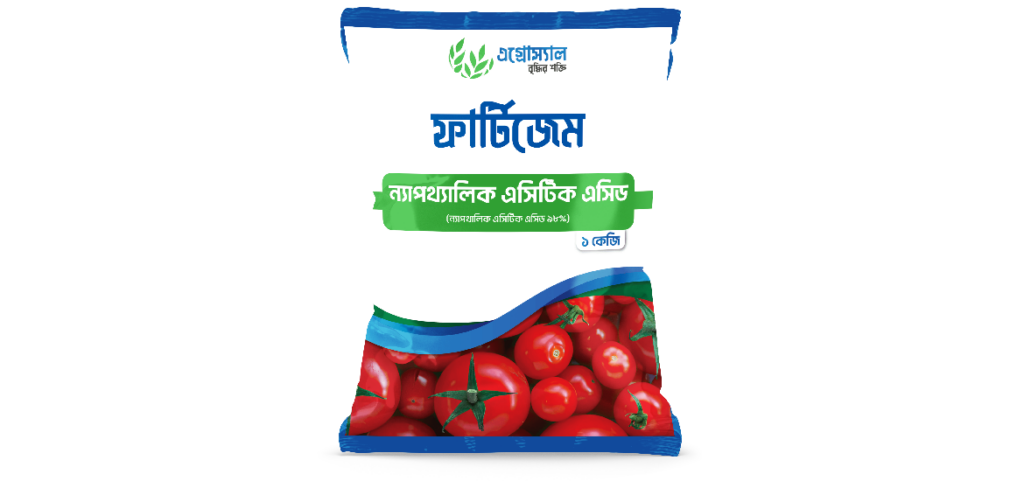
Contents: 98% Napthylic Acetic Acid
Key Benefits:
- Helps in the development of adventitious roots even in extreme cold or drought, cold currents, salinity, waterlogging etc.
- Increases fruits and the rapid expansion of root of various tuber crops such as potato, garlic, onion, ginger, turmeric, carrot, radish etc. Apart from this, maximum yield is also obtained in crops such as chilli, tomato, grape etc.
- Makes plants take more nutrients from the soil, so yields increase
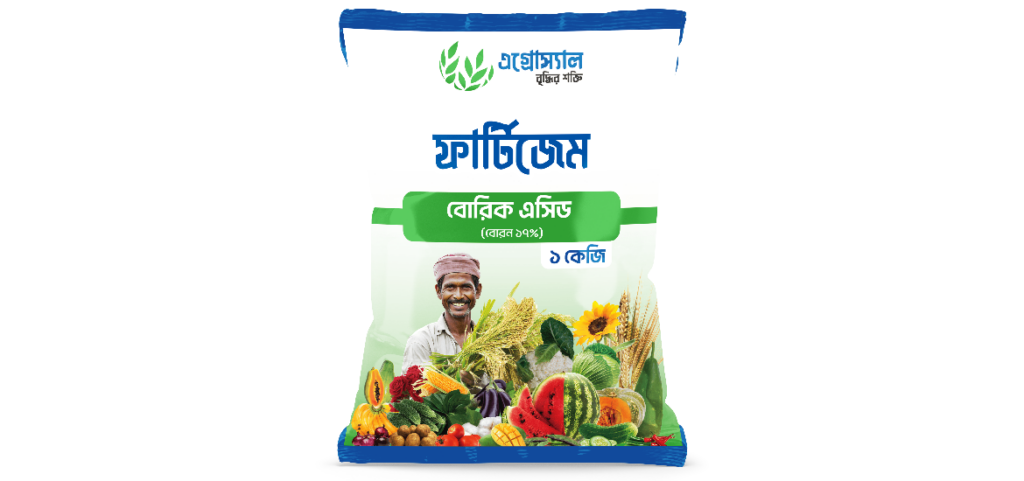
Content: 17 % Boron
Key Benefits:
- Carbohydrates produced through photosynthesis which helps in food metabolism and transport.
- Increases the viability of flower pollinators thereby helping in pollination.
- Plays an important role in the production of plants, flowers, fruits and seeds.
- Synthesizes proteins and amino acids.
- Plays an active role in the formation and formation of new plant cells
Application: per bigha (at 33 shotangsho)
- For rice, wheat, potato, maize, betel nut, almond, sesame, soybean, tomato, onion, garlic, pineapple, cucumber, dal, linseed, coriander, lentil, carrot, cauliflower, cabbage, tea, coffee, Ginger, sugarcane 800-1000 grams
- Pulses (mung, chickpea, kesari etc.), vegetables, cabbage, spinach, radish, lettuce 500-800 grams
- cotton, chilli, sunflower, mustard, groundnut 1-1.5 kg.
- For banana, papaya, watermelon, black jam. 30-40 grams
- For Dates, coconut, rubber 15-20 grams.
- In case of rose, marigold flowers 5-10 grams
It should be mixed with other chemical fertilizers at the time of applying in the field. It can be applied in two different ways, sprinkling on the ground and spraying on the leaves. If there is lack of boron in the crop, it should be mixed with water and sprayed in the late afternoon. Boron fertilizer gets wet when exposed to water in the air, so the packet of boron should be opened shortly before application to the land.
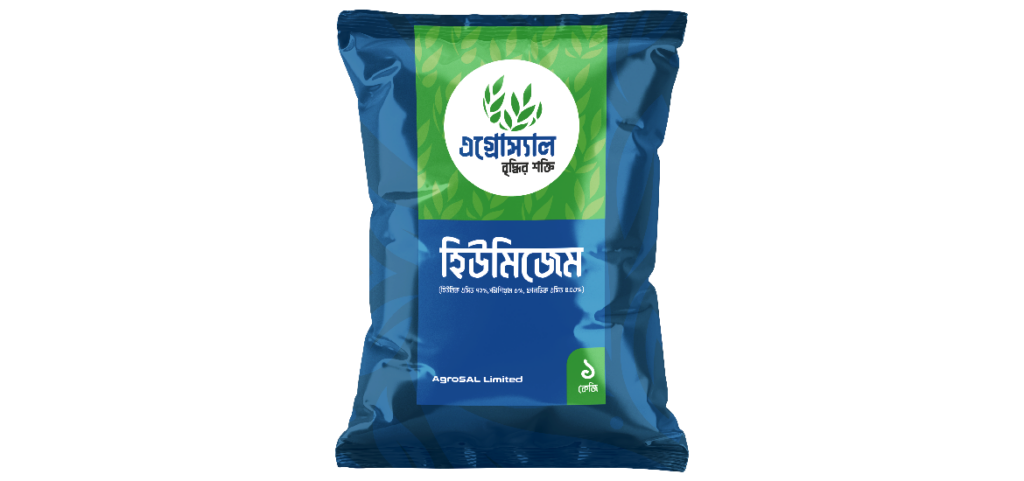
Content: Humic acid 72%, potassium 6%, fulvic acid 4.03%
Key Benefit:
- Strong granules/crystals that act as soil bio-energizers
- Increases the number of stems and roots by causing rapid division of plant cells
- Makes soil nutrients available for plant uptake and improves fruit structure, size, weight, number and color
- Increases plant resistance against drought, salinity and high temperature
Application rate: 1-1.5kg/bigha
Fertigem Mono (Zinc Sulphate Mono)
Content: Zinc 36% Sulfur 17%
Benefits:
- Fertigem Mono allows plant roots to reach deeper into the soil and plants are able to absorb more nutrients from the soil, resulting in balanced plant growth.
- Fertigem Mono plays an essential role in plant protein synthesis and enhancing hormone function
- Fertigem Mono increases plant resistance to diseases and increases grain yield resulting in better nutrition
Application rate: 2-5 kg/ acre of Fertigem Mono gives good yield or 200 grams of mono zinc should be mixed well in 10 liters of water and sprayed on the land for 5 shotangsho.
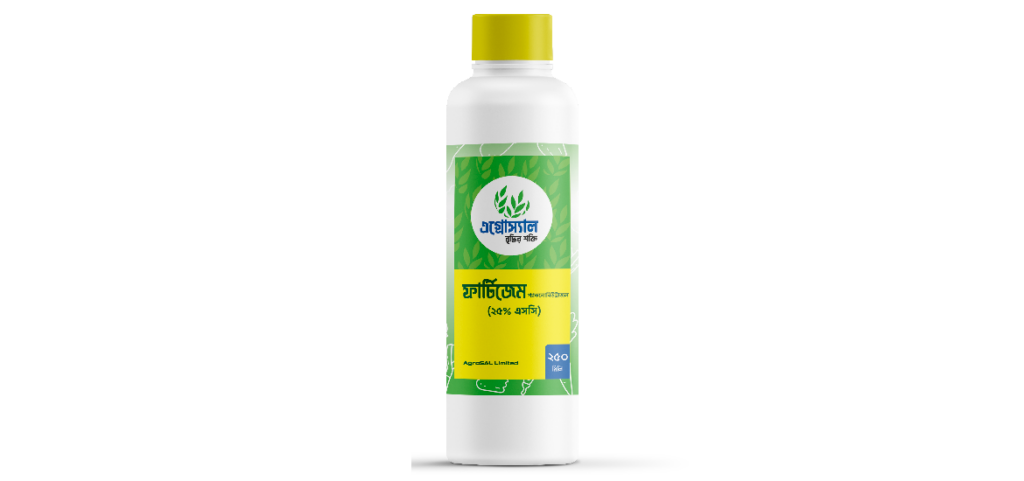
Content: Paclobutrazol 25% sc, a plant growth regulator
Key Benefits:
- Helps the mango tree to produce more buds
- Works to increase total yield by preventing dropping of bud from mango trees
- Aids in increasing reproductive growth of mango trees
- By altering the biennial fruiting characteristics of the mango tree, it favors fruiting every year, thereby increasing the production of mangoes
- Increases the yield of mango by 15-25% over the normal yield with regular use
Application Level:
Age of the plant
| Quantity | Time of use
|
12-15 years | 15 ml | After collection of mango |
16-25 years | 25 ml | Between July and October |
26-50 years | 30 ml | 90-120 days before flowering |
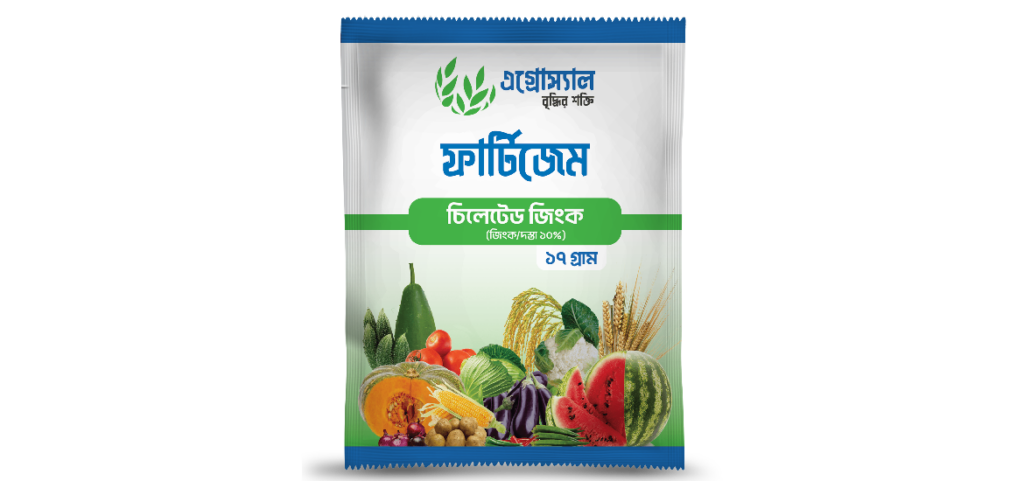
Contents: Zinc-10%
Key Benefits
- Helps in the formation and synthesis of chlorophyll, resulting in green leaves
- Increases plant enzyme activity and helps in auxin production
- Helps in proper growth by increasing crop resistance
- Helps in flowering and seed formation
Application:
Various grain crops including rice, wheat, corn. A variety of winter and summer vegetables including brinjal, gourd, pumpkin, potato, potato, tomato, gourd, bitter gourd, cauliflower, cabbage, cucumber, bean, pepper, onion, garlic. Different types of fruit trees including mango, litchi, guava, banana, pineapple, watermelon, papaya. Various cash crops including tea, jute. Various oil and pulse crops including mustard, lentils.
Rate: 0.5 grams per liter of water should be mixed and used. 17 grams per bigha (33 shotangsho) should be used. Mix the entire powder (17 grams) of the packet in half a glass of water. Mix the powder mixture with required amount of water and spray it well on the ground.
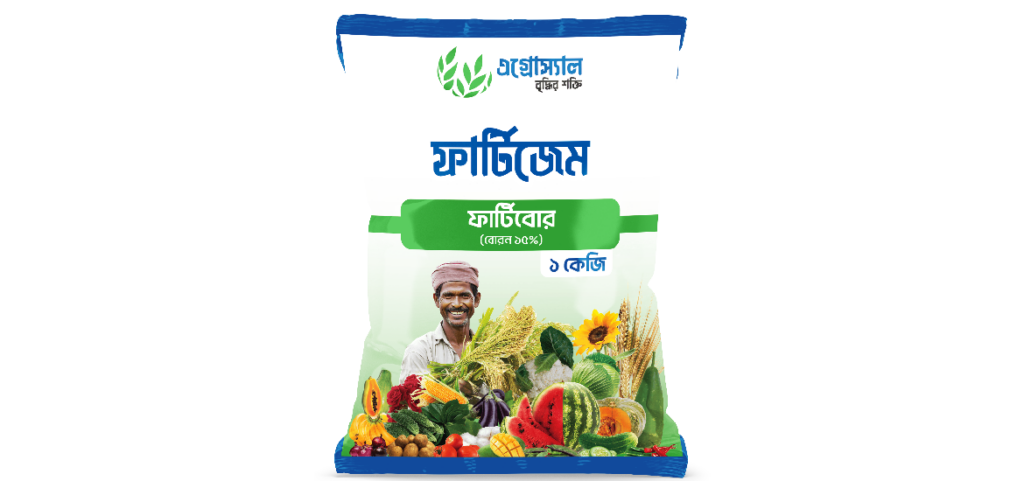
Content: 15 % Boron
Key Benefits:
- Carbohydrates produced through photosynthesis which helps in food metabolism and transport.
- Increases the viability of flower pollinators thereby helping in pollination.
- Plays an important role in the production of plants, flowers, fruits and seeds.
- Synthesizes proteins and amino acids.
- Plays an active role in the formation and formation of new plant cells
Application: per bigha (at 33 shotangsho
In case of rice, wheat, potato, maize, betel nut, almond, sesame, soybean, tomato, onion, garlic, pineapple, cucumber, dal, linseed, coriander, lentil, carrot, cauliflower, cabbage, tea, coffee 800-1000 grams. In case of ginger, sugarcane. 500-800 grams. In the case of beans, peas, vegetables, spinach, lettuce. 1-1.5 kg. For cotton, chilli, sunflower, mustard, groundnut. It should be mixed with other chemical fertilizers at the time of final tillage or planting of seedlings. It can be applied in two different ways, sprinkling on the ground and spraying on the leaves. If there is lack of boron in the crop, it should be mixed with water and sprayed in the late afternoon. Boron fertilizer gets wet when exposed to water in the air, so the packet of boron should be opened shortly before application to the land.
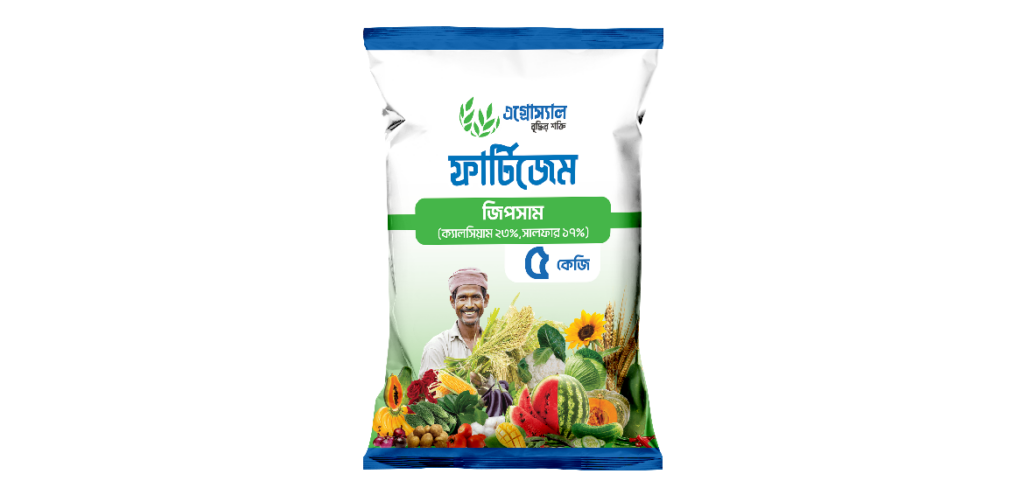
Content: Calcium- 20%, Sulfur- 16%
Key Benefits:
- Facilitates proper growth by making nutrients readily available to crops
- Leaves the plant green, grows roots and increases the number of buds
- Helps in cell formation of crops
- Makes crops mature at the right time with proper growth
- Increase the oil content of oilseed crops
- Promotes water absorption capacity of soil and helps prevent soil erosion
- Improves the quality of vegetables and fruits
Application level
5-7 kg of fertigem gypsum should be applied per bigha (33 shotangsho). When planting seedlings of fruit trees or other trees, 100–200 grams of gypsum should be sprinkled in a circular pattern around the tree and combined with the soil either prior to the start of the monsoon or following fruit collection. However, depending on the calcium and sulfur deficiency in the land, the application level may be more or less.
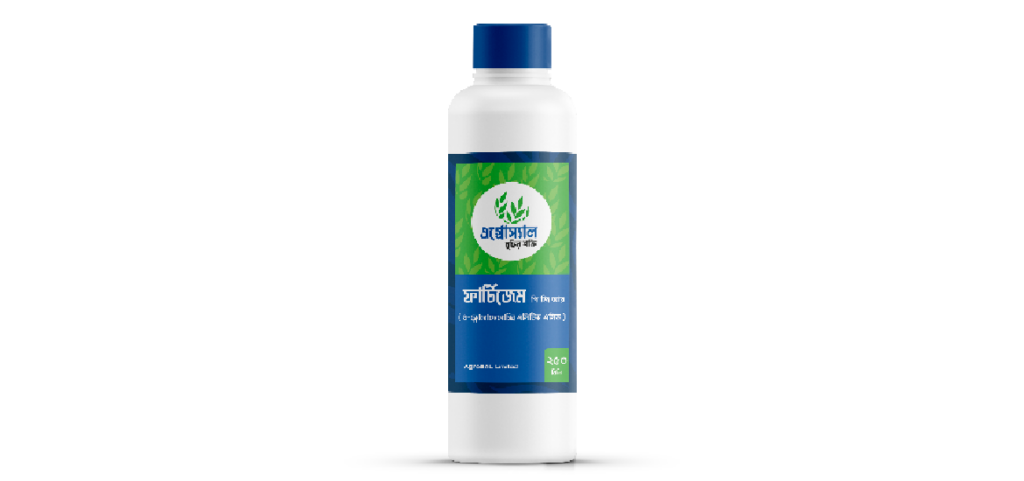
Content: 4- chlorophenoxyacetic acid
Benefits:
- Accelerates the growth of the tree.
- Stops the dropping of flower and fruits and increases the quality of the crop.
- Higher yield by increasing the size, weight and number of grain and fruits.
- Helps in pollination
Application: Mix 1.5-2.5 ml of Fertigem PGR per liter of water and spray in the morning or afternoon at 2 weeks interval.
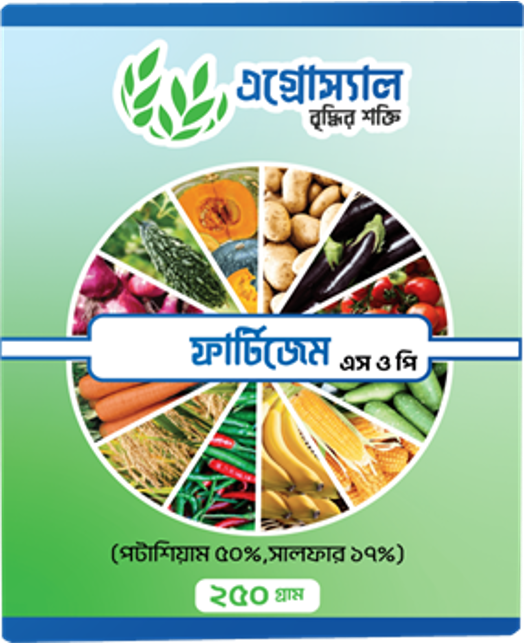
Contents: Potassium 50%, Sulfur 17%
Key Benefits:
- Enables leaf activity
- Chloride free so usable for sensitive crops
- SOP is more effective than MOP fertilizers in overcoming potassium deficiency in saline soils
- Being free of chlorine, the quality of vegetables and fruits remains intact
- Activates protein synthesis, photosynthesis and enzyme activity
- Provides resistance of disease to plants
- Enhances nutritional value of crops while improving the quality of fruits as well as increasing yield
- Helps in transportation and storage of harvested crops for more time
- 100% soluble in water, so easily absorbed by plant
Application level:
3-5 grams per liter of water should be sprayed during the growing stage of the crop and at the time of flowering and fruiting. Spraying in the morning or afternoon at low temperatures gives best results.
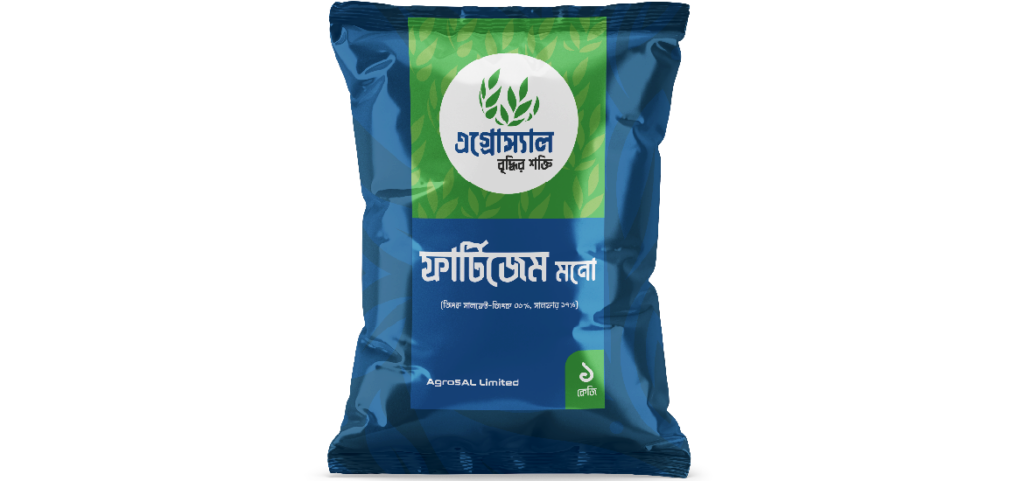
Content: Zinc 36% Sulfur 17%
Benefits:
- Fertigem Mono allows plant roots to reach deeper into the soil and plants are able to absorb more nutrients from the soil, resulting in balanced plant growth.
- Fertigem Mono plays an essential role in plant protein synthesis and enhancing hormone function
- Fertigem Mono increases plant resistance to diseases and increases grain yield resulting in better nutrition
Application rate: 2-5 kg/ acre of Fertigem Mono gives good yield or 200 grams of mono zinc should be mixed well in 10 liters of water and sprayed on the land for 5 shotangsho.
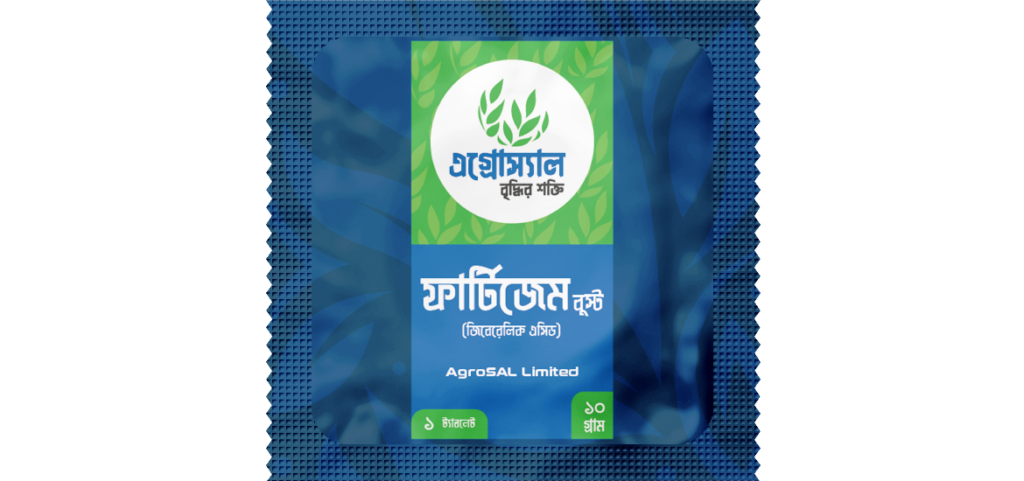
Content: 10% Gibberellic acid
Fertigem boost is the natural hormone of the plant that boosts plant cell division, affects growth and development, promotes flower and fruit production.
Gibberellic acid or GA3 is a natural organic compound. It helps in stimulating the germination of seeds, encouraging the growth of shoots and lengthening internodes, identifying a plant's sex expression, and encouraging flowering.
GA3 works faster even when applied in very small amounts in plant. As it dissolves easily in water, it is quickly absorbed by plants.
Applications: Mix 1/4 tablet in 16 liters of water and spray. After a specified time, mix the mixture (solution) with 64 liters of water and spray it well on the plants.
